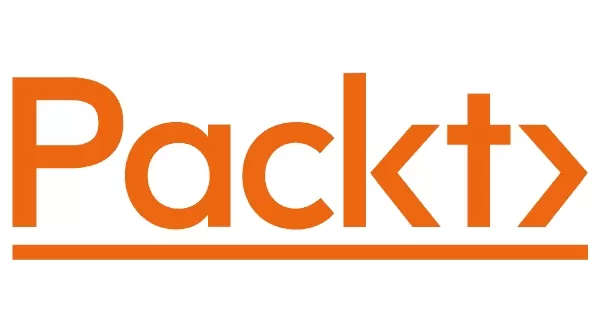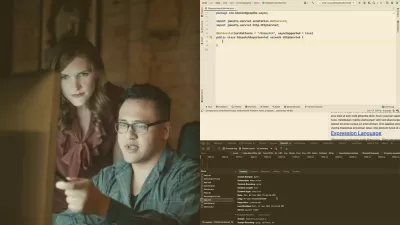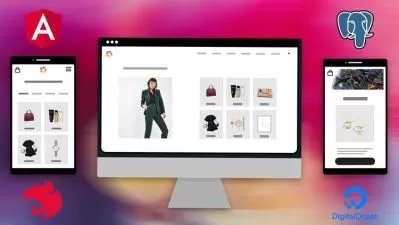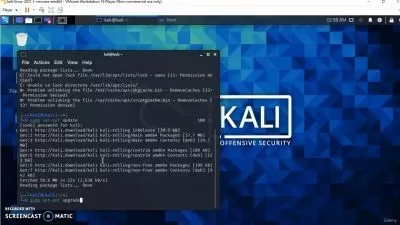00001 Course Overview.mp4
02:20
00002 Introduction.mp4
01:17
00003 What This Course Covers.mp4
01:21
00004 How Browsers Used to Make Data Requests.mp4
01:33
00005 AJAX - Introduction.mp4
04:37
00006 Quick Step Back.mp4
01:51
00007 XMLHttpRequest - Introduction.mp4
04:26
00008 Building the XMLHttpRequest Object.mp4
09:22
00009 Dealing with the Response Data.mp4
06:05
00010 Another Example - Displaying Time from a Server.mp4
07:11
00011 Building Our Custom Time Function.mp4
05:50
00012 Another Example - Fetching an Image and Person s Name.mp4
07:25
00013 Defining Our requestListener Function.mp4
11:02
00014 XMLHttpRequest - Summary of Our Picture and Name Example.mp4
02:08
00015 Fetch - Introduction.mp4
03:29
00016 Fetch - Setting It Up.mp4
01:53
00017 Fetch - What Is the .json Method.mp4
02:05
00018 Fetch - with POST.mp4
11:53
00019 Replacing XMLHttpRequest with Fetch for Our Picture and Name Example.mp4
09:08
00020 Conclusion.mp4
02:37
00021 The Browser s Main Functionality.mp4
03:32
00022 Browsers and W3C.mp4
02:47
00023 Browsers Request - Introduction.mp4
01:35
00024 Packets.mp4
02:32
00025 Packets - Five Layers Explained.mp4
04:39
00026 Packets - Example.mp4
03:48
00027 HTTP Protocol - Introduction.mp4
02:49
00028 HTTP - Request and Response.mp4
04:53
00029 Take a Step Back - This Stuff Is Practical.mp4
03:41
00030 Section Summary.mp4
01:36
00031 Polyfill Introduction.mp4
03:27
00032 What Is a Browser.mp4
03:33
00033 Do Browsers Follow a Set of Standards.mp4
02:46
00034 What Is a Polyfill.mp4
04:32
00035 Testing Whether the forEach Method Exists in Our Browser.mp4
03:07
00036 What Is forEach.mp4
03:02
00037 Practical Example of forEach.mp4
05:49
00038 Custom forEach Polyfill - Introduction.mp4
01:24
00039 Custom forEach Polyfill - First Step.mp4
04:38
00040 Custom forEach Polyfill - Callback Function.mp4
04:48
00041 What Is THIS.mp4
04:12
00042 Custom forEach Polyfill - Final.mp4
04:42
00043 Section Summary.mp4
01:27
00044 Introduction.mp4
01:52
00045 JS Engine Rendering Engine and the Glue that Holds It All Together Browser.mp4
04:02
00046 How the Browser Works the Steps It Takes to Fetch Data and Display It.mp4
12:56
00047 Critical Rendering Path - Introduction.mp4
02:57
00048 Constructing the DOM - Part 1.mp4
03:23
00049 Constructing the DOM - Part 2.mp4
03:50
00050 Quick Recap.mp4
02:14
00051 Performance Tab - DevTools.mp4
10:56
00052 Call Tree - an Alternative Way to Analyze Your Website s Activities.mp4
03:55
00053 Bottom-Up and Event Log - an Alternative Way to Analyze Your Website s Activities.mp4
07:22
00054 CSSOM - Introduction.mp4
01:34
00055 Why Do We Need to Have a CSS Tree.mp4
04:20
00056 How to View the CSSOM Process for Your Website - Recalculate Style.mp4
02:41
00057 Render Tree - Introduction.mp4
02:05
00058 Render Tree - Challenge.mp4
02:59
00059 Render Tree - Solution.mp4
01:16
00060 Quick Recap - Render Tree.mp4
01:56
00061 Comparing DOM CSSOM and Render Tree.mp4
10:34
00062 Render Tree - Layout.mp4
02:07
00063 Viewing the Layout Process in DevTools.mp4
02:13
00064 Render Tree - Paint.mp4
01:47
00065 Step Back.mp4
02:09
00066 Render Blocking Resources - Introduction.mp4
03:39
00067 How to Make CSS Non-Render Blocking Hint - Media Queries.mp4
05:18
00068 Media Types - Example.mp4
07:09
00069 Is JavaScript Render Blocking.mp4
01:44
00070 JavaScript and the DOM.mp4
03:13
00071 The Order of Your Code Matters - Part 1.mp4
05:58
00072 The Order of Your Code Matters - Part 2 Solution.mp4
06:14
00073 JavaScript and the CSSOM.mp4
01:34
00074 Example of JavaScript Having to Wait for the CSS.mp4
02:22
00075 Step Back - DOM Versus CSSOM Versus JavaScript.mp4
02:59
00076 JavaScript Is Render Blocking.mp4
03:32
00077 Approach 1 - Placing JavaScript at the Bottom of Your Page.mp4
07:29
00078 Approach 2 - Using Async.mp4
05:57
00079 Comparing Approach 1 Bottom Versus Approach 2 Async.mp4
01:25
00080 Approach 3 - Defer.mp4
03:51
00081 Comparing Approach 2 Async Versus Approach 3 Defer.mp4
05:22
00082 Approach 4 - Custom Event Listener - Part 1.mp4
07:48
00083 Approach 4 - Custom Event Listener - Part 2 Let s Analyze the Entire Render.mp4
03:25
00084 Async Versus Defer Versus Custom.mp4
05:17
00085 Approach 5 - Preload.mp4
03:48
00086 Summary of Where We Can Place Our JS to Improve the CRP.mp4
01:46
00087 Introduction to Speculative Parsing.mp4
12:53
00088 What Is Speculative Parsing.mp4
02:23
00089 Section Introduction.mp4
01:38
00090 Why Is the Network Panel Important.mp4
02:02
00091 Introduction to Network Panel.mp4
02:07
00092 What Do All the Columns Mean in the Network Panel.mp4
08:20
00093 Response and Request Headers.mp4
02:41
00094 Timing Tab and Waterfall Stack.mp4
01:34
00095 Three Most Common Network Requests You Will See.mp4
02:14
00096 Time Phases - Introduction.mp4
00:40
00097 Time Phases - Detailed Explanation.mp4
11:50
00098 CDN - An Introduction.mp4
05:15
00099 Analyzing File Requests in the Network Panel.mp4
11:28
00100 Network Panel High-Level Overview.mp4
02:55
00101 Analyzing Our File s CRP - No CSS and No JS.mp4
02:55
00102 What Is the Size Column.mp4
01:10
00103 How to Identify the Number of Critical Resources and Server Round Trips.mp4
03:08
00104 Let s Add JavaScript and CSS.mp4
08:12
00105 Rendering Our New File with JavaScript and CSS.mp4
01:34
00106 Impact that JavaScript and CSS Have on Our CRP.mp4
07:49
00107 Inline JavaScript.mp4
02:44
00108 Adding ASYNC to Our File and Its Impact on the CRP.mp4
03:24
00109 Steps to Take to Optimize the Critical Rendering Path.mp4
04:38
00110 Audit Lighthouse - Introduction.mp4
02:00
00111 Audit Lighthouse - Example.mp4
07:04
00112 Section introduction.mp4
04:02
00113 HTTP 1.1 - Recap.mp4
03:10
00114 HTTP 2 - Where Did It Come From.mp4
02:20
00115 HTTP 2 - What Is It.mp4
06:47
00116 HTTP 2 Questions and Answers.mp4
06:56











